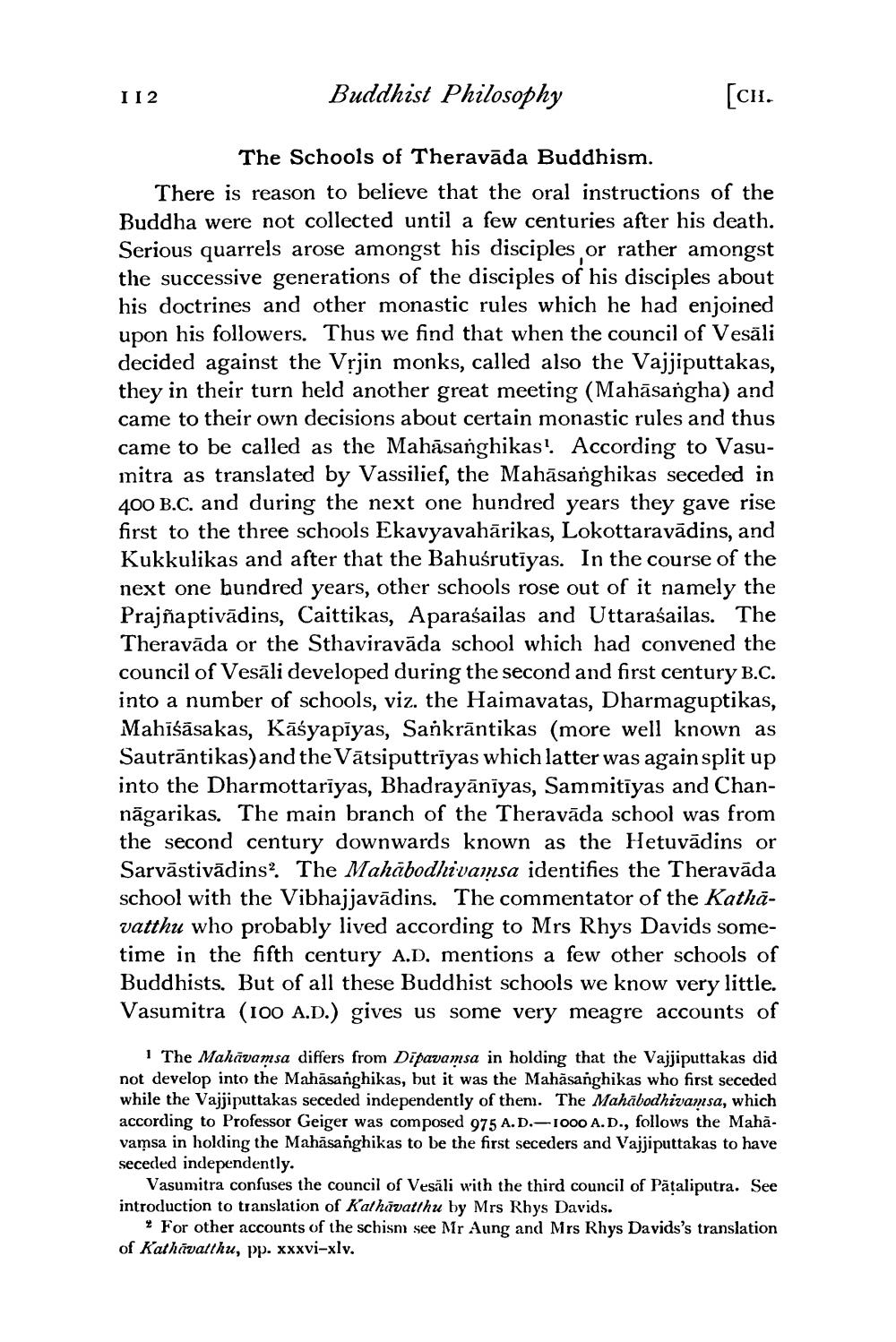________________
I 12
Buddhist Philosophy
[ch.
The Schools of Theravāda Buddhism. There is reason to believe that the oral instructions of the Buddha were not collected until a few centuries after his death. Serious quarrels arose amongst his disciples or rather amongst the successive generations of the disciples of his disciples about his doctrines and other monastic rules which he had enjoined upon his followers. Thus we find that when the council of Vesāli decided against the Vrjin monks, called also the Vajjiputtakas, they in their turn held another great meeting (Mahāsangha) and came to their own decisions about certain monastic rules and thus came to be called as the Mahasanghikas! According to Vasumitra as translated by Vassilief, the Mahāsanghikas seceded in 400 B.C. and during the next one hundred years they gave rise first to the three schools Ekavyavahārikas, Lokottaravādins, and Kukkulikas and after that the Bahuśrutiyas. In the course of the next one hundred years, other schools rose out of it namely the Prajñaptivādins, Caittikas, Aparaśailas and Uttaraśailas. The Theravada or the Sthaviravāda school which had convened the council of Vesāli developed during the second and first century B.C. into a number of schools, viz. the Haimavatas, Dharmaguptikas, Mahiśāsakas, Kāśyapiyas, Sankrāntikas (more well known as Sautrāntikas)and the Vātsiputtriyas which latter was again split up into the Dharmottariyas, Bhadrayāniyas, Sammitīyas and Channāgarikas. The main branch of the Theravāda school was from the second century downwards known as the Hetuvādins or Sarvāstivādins? The Mahābodhivamsa identifies the Theravāda school with the Vibhajjavādins. The commentator of the Kathavatthu who probably lived according to Mrs Rhys Davids sometime in the fifth century A.D, mentions a few other schools of Buddhists. But of all these Buddhist schools we know very little. Vasumitra (100 A.D.) gives us some very meagre accounts of
1 The Mahāvamsa differs from Dipavamsa in holding that the Vajjiputtakas did not develop into the Mahāsanghikas, but it was the Mahasanghikas who first seceded while the Vajjiputtakas seceded independently of them. The Mahābodhivamsa, which according to Professor Geiger was composed 975 A.D.-1000 A.D., follows the Mahā. vamsa in holding the Mahāsanghikas to be the first seceders and Vajjiputtakas to have seceded independently.
Vasumitra confuses the council of Vesāli with the third council of Pāțaliputra. See introduction to translation of Kathāvatthu by Mrs Rhys Davids.
4 For other accounts of the schism see Mr Aung and Mrs Rhys Davids's translation of Kathāvalthu, pp. xxxvi-xlv.




